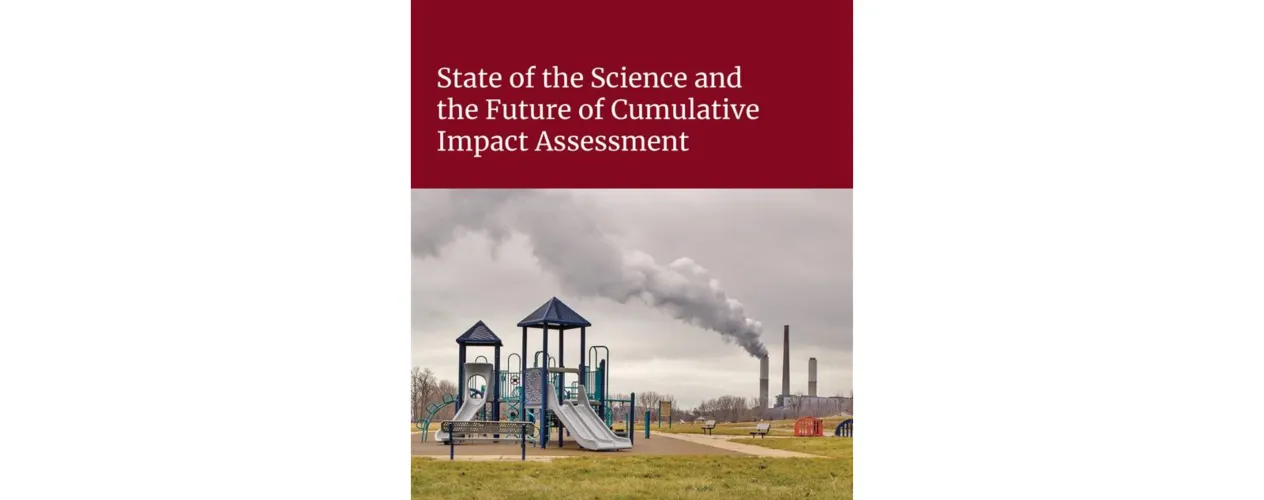UCLA Fielding School of Public Health professor part of national effort to improve risk assessment during public health crises

UCLA Fielding School of Public Health’s Dr. Yoshira Ornelas Van Horne, assistant professor in the Department of Environmental Health Sciences, served on a team of experts created to improve how federal, state, and local governments conduct risk assessment during – and after – a public health crisis.
The 170-page report - State of the Science and the Future of Cumulative Impact Assessment – was published this month by the by the National Academies of Sciences, Engineering, and Medicine (NASEM). Ornelas Van Horne, an exposure scientist, was one of 16 experts, from as many universities and agencies, who served on the report committee.
“Traditionally, government agencies - when they look at the impact of a certain chemical - they've taken a very quantitative, numerical approach,” Ornelas Van Horne said. “A cumulative impact assessment takes a ‘system-wide’ approach on how we assess harm … it's really taking into multiple stressors into account, both chemical, social, political, and non-chemical, that impact people's health.”
Cumulative impact assessment (CIA) is a tool to help environmental and other relevant decision-makers consider multiple factors in evaluating priorities and potential changes in local, state, tribal, and/or national policies or regulations, with a focus on improving health and well-being. The 18-month-long study was in response to a request from the U.S. Environmental Protection Agency (EPA) and was designed to provide recommendations on the state of the science of CIA and on potential applications at the community, tribal, regional, state, and national levels.
For the report, the researchers studied incidents – ranging from the 2023 derailment of a freight train carrying toxic chemicals in East Palestine, Ohio, to the 2025 wildfires in Los Angeles County – to check how federal and local agencies had assessed the impact of the disasters on the health of residents in the affected communities.
Whether addressing the aftermath of wildfires, chemical spills, or undertaking retrospective and anticipatory evaluations of environmental policies related to air quality, climate change, or drinking water contamination, cumulative impact assessment provides a holistic framework to characterize the full scope of community exposures to environmental and structural stressors,” said Dr. Rachel Morello-Frosch, a professor of public health at the University of California, Berkeley, who also served on the team. “ It also acknowledges that these myriad exposures often co-occur and can make communities more vulnerable to the short- and long-term effects of environmental threats, with implications for how regulatory agencies should ensure that these populations are adequately protected."
Specifically, the scientists examined issues at the national level, ranging from lead exposure to harmful chemicals to policies related to climate change, and specific local problems in Colorado, Ohio, and Louisiana, as well as the California wildfires.
The January blazes in Los Angeles County, in both the Pacific Palisades-Malibu area adjacent to the Santa Monica Mountains, and the Altadena-Pasadena communities in the foothills of the San Gabriel Mountains, claimed at least 31 lives and damaged or destroyed more than 18,000 structures, according to Los Angeles County officials.
The researchers came back with detailed findings on how emergency response and health officials should learn from, and adapt to, the experiences of those involved in crisis response in the various cases; in Los Angeles, for example, the team examined the health impact of the wildfires on firefighters, residents, construction workers, and transit agency staff serving the disaster areas, including during the emergency and the aftermath – the clean-up and restoration phases.
“Typically, when people think of assessing wildfire damage, one of the immediate research questions has been quantifying or measuring the concentration of air pollution that's come from wildfires,” Ornelas Van Horne said. “While that's certainly important, equally important is the recovery phase; the cumulative impacts approach is to inform people that if their ultimate goal is to actually rebuild their homes, then they not only have to worry about the potential air contamination, but also about their soil’s health, as well, and ensuring that there's local programs that can offer help.”
Beyond the disaster areas, the more in-depth approach is also designed to allow evaluation of the impact of a crisis on communities that were not the site of the crisis but must deal with the aftermath, including those near a landfill or similar facilities where debris is storied or disposed of, Ornelas Van Horne said.
“The cumulative impacts are very much worth considering, both for the Altadena or Palisades communities, but also the communities around the landfills taking in debris,” she said. “It’s not simply ensuring that not only the debris they are receiving is tested for chemicals but also accounting for the noise and the diesel fumes that would come from all the added trucks now going into the landfill.”
FUNDING
This study was supported by a contract between the National Academy of Sciences and the U.S. Environmental Protection Agency (Contract No. AWP-000293). Any opinions, findings, conclusion, or recommendations expressed in this publication do not necessarily reflect the views of any organization or agency that provided support for the project.

